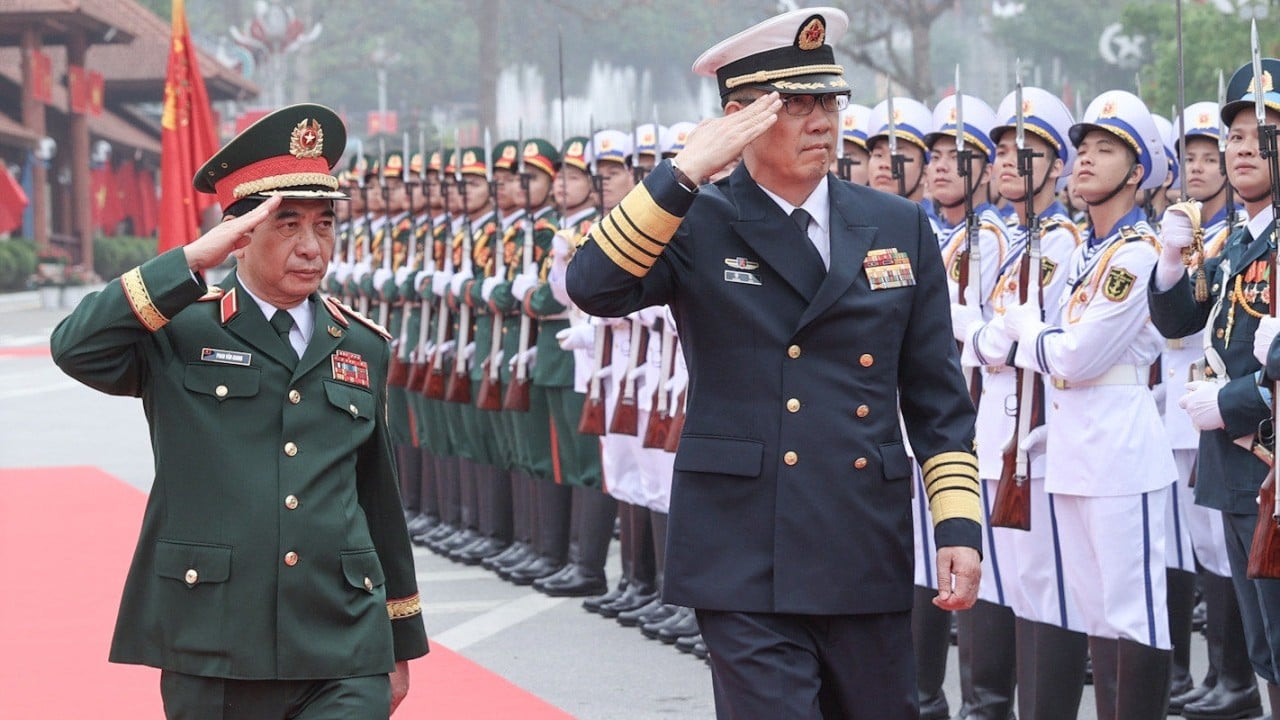
Editor's note: The article is written by Zhang Bin, a senior researcher at the China Finance 40 Forum (CF40) and deputy director of the Institute of World Economics and Politics, Chinese Academy of Social Sciences.
The article was first published on the CF40 official website and reflects the author's opinions and not necessarily the views of CGTN.
It has been translated from Chinese and edited for brevity and clarity. The tariff shocks initiated by US President Donald Trump have far exceeded market expectations and posed a daunting challenge to the global economy.
What concerns the market is not just tariffs of such scale but also the disruption of the global trade order and the heightened uncertainty that lies ahead.As a major global trading nation, China has no choice but to confront the challenges brought about by Trump's tariff policy.
Comparatively, most Chinese and international investors remain relatively optimistic about the Chinese economy and its capital markets.This optimism about the Chinese economy and its capital markets is grounded in the following key factors.Firstly, the economic fundamentals are solid.
Over decades, China's economy has made remarkable progress across various industries and sectors, which is attributable to robust market competition, economies of scale, and the diligence and hard work of Chinese workers.
In addition to the new technologies and industries that everybody knows, such as new energy vehicles, DeepSeek, and robotics, there has been a steady stream of new-generation agricultural products in the agricultural sector.
Meanwhile, in the service field, organizational, management, and operational innovations are consistently enhancing consumer experience in daily life.
Among the world's major economies, China remains one of the fastest in terms of industrial innovation.The Chinese economy has been recovering from a period of sluggish demand with renewed vitality.
Since last September, the Chinese government has stepped up countercyclical policy efforts, and there have been marked improvements in corporate, government, and household cash flows, as well as a rebound in capital market valuations.According to the 2025 Government Work Report released during the annual two sessions in March, the deficit-to-GDP ratio has been raised to four percent, alongside a significant expansion in government debt and spending.
With these countercyclical policy measures, government spending will provide stronger support for boosting aggregate demand and further invigorating the economy. Secondly, the fundamentals of medium and long-term policy environments are favorable.
China's domestic policy landscape remains relatively stable compared with the highly uncertain external environment.
Market-based reforms and opening up have been the bedrock of the country's tremendous economic and social development, widely embraced across society and constantly upheld as a policy orientation by the Chinese government.As new sectors and innovations emerge, China's regulatory policies still have deficiencies and areas for refinement, but the country's commitment to opening-up and policy orientation of market-based reforms remain unshakable.
In recent years, key government economic meetings have consistently emphasized improving the institutional environment, particularly the protection of private enterprises, further enhancing the market economy system and advancing high-level opening-up.Thirdly, China has ample policy space to counter tariff shocks initiated by Trump.
To begin with, China has sufficient room to stimulate domestic demand through policy introduction to offset weakening external demand.
The country's low inflation means that China can rely on both fiscal and monetary policy tools to expand domestic demand without worrying about inflationary risks.
In contrast, developed countries are generally plagued by elevated inflation levels, leaving them with limited policy space to expand domestic demand due to the dilemma of stagflation.Furthermore, apart from the broad-based policy of expanding domestic demand, China also possesses a diverse range of targeted policy tools to help specific industries and import-export companies navigate the challenges.
After the tariff shocks in 2018, both Chinese enterprises and the government have accumulated practical experience in dealing with such shocks.
This allows China to respond with greater composure in this new round of tariff shocks.Moreover, China now approaches the negotiations with the US with greater confidence.
This stems not only from its economic strength but also from the deep reliance of the global economy, the US included, on the Chinese economy since its reform and opening-up.
As a result, China is not in a disadvantaged position at the negotiation table, which lays the foundation for more favorable outcomes in tariff-related negotiations between the two countries.Fourthly, the capital market valuations are more attractive.
Following prolonged rallies in the US and Japanese stock markets, valuations of many stocks have reached historical highs, raising concerns among some investors.
In contrast, the overall price-to-earnings ratios in the Chinese stock market remain low, so for investors, the risk of asset bubbles is lower in China.The Trump administration's stronger-than-expected tariff measures are unprecedented in the modern era and will damage both the world and the US itself.
The full extent of their ripple effects remains uncertain, and the bottom for the US economy and capital markets is difficult to determine. In comparison, China's countermeasures have been to stabilize domestic demand and economic fundamentals, help affected industries and enterprises navigate the challenges, and steadfastly uphold an open and cooperative global trade order.
By resolutely following a sound philosophy of development, the Chinese economy is well-positioned for greater certainty and a more promising future in an increasingly challenging international environment.

 10
10
















